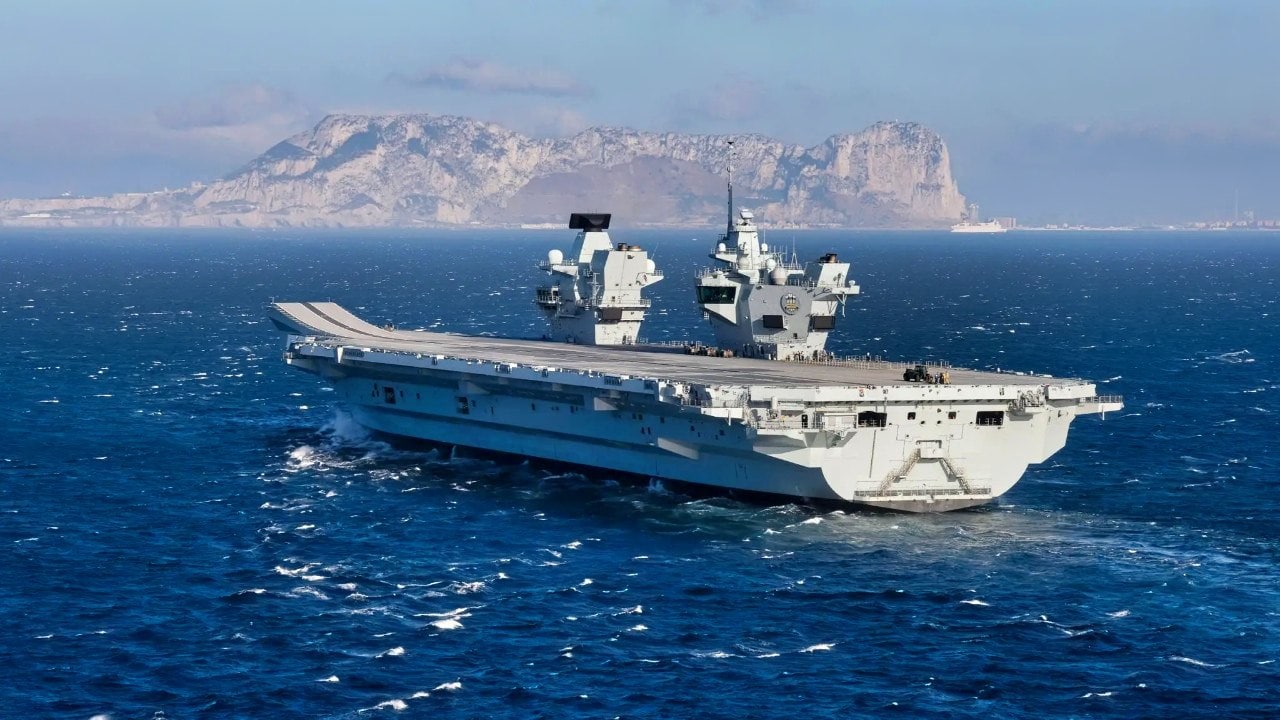Summary and Key Points: The Royal Navy’s Queen Elizabeth-class aircraft carriers, HMS Queen Elizabeth and HMS Prince of Wales, have faced persistent technical challenges since their introduction.
-Notable incidents include flooding in HMS Prince of Wales’ engine room, issues with propeller shafts, and aircraft accidents involving both an F-35B jet and a Merlin helicopter.
-Despite these setbacks, the dual-carrier setup has demonstrated strategic resilience and operational flexibility.
-Future plans to integrate unmanned drones alongside F-35Bs suggest potential enhancements in naval aviation capabilities.
-Although debates about carrier vulnerability continue, their strategic and symbolic importance likely ensures the Royal Navy maintains both carriers for the foreseeable future.
Are the UK’s Queen Elizabeth-Class Carriers Worth the Trouble?
There has periodically been talk of the Royal Navy retiring one of their two Queen Elizabeth-class aircraft carriers, though whether these rumors come to fruition remains to be seen.
However, despite the rumor, what is a fact is that the class has been plagued by problems virtually since it entered service with the Royal Navy.
In 2021, an F-35B operating from the HMS Queen-Elizabeth crashed into the Mediterranean just after taking off from the ship. A subsequent investigation showed that the jet had injected a protective covering that had not been properly removed.
In 2024, a Merlin Mk4 helicopter crashed into the English Channel. The investigation is still ongoing, but it is suspected that the aircraft experienced an engine failure.
Though neither of these accidents can be directly attributed to the carriers themselves, the class has also experienced its share of problems and breakdowns.
Emergency Replacement
In 2020, one of the HMS Prince of Wales’ engine rooms flooded thanks to a broken water pipe, which caused significant electrical damage.
Two years later, the carrier was to sail to the United States for exercises off the American east coast, but an issue with one of the ship’s propeller shafts forced the carrier to return to the U.K.
The HMS Queen Elizabeth was to participate in last year’s Steadfast Defender exercises, the largest NATO maneuvers since the end of the Cold War, and would have been the centerpiece of the Carrier Strike Group the Royal Navy sent to participate in the exercises.
However, just prior to shipping out, a problem was discovered in one of the carrier’s propeller shafts, and the Royal Navy decided to pull the HMS Queen Elizabeth out, replacing her with the HMS Prince of Wales.
Though the HMS Prince of Wales was meant to be at port for a month, undergoing refit and repair, the ship was quickly readied to sail with the Carrier Strike Group in just a week.
Though the incident underscores some of the problems with the Queen Elizabeth-class, it also highlights the Royal Navy’s usefulness in having more than a single aircraft carrier in service.
Manned-unmanned Teaming
Recent reports highlight the future usefulness the carriers could enjoy thanks to unmanned drones. If successful, these drones could launch alongside their manned counterparts, the Royal Navy’s F-35B fifth-generation stealth fighters.
Into the Future
More broadly, the question of whether aircraft carriers have a future in an era in which increasingly long-range and hypersonic missiles are proliferating is prescient.
In war games conducted by both the United States as well as the United Kingdom, aircraft carriers are particularly vulnerable to these kinds of weaponry, leading officials like Pete Hegseth, the Trump administration’s top man at the Pentagon, to question their usefulness in a future conflict.
Even though aircraft carriers look increasingly vulnerable to a variety of anti-ship missiles, particularly those that are hypersonic, the ships do complicate an enemy’s strategic planning.
There is also noting now comparable for power projection at similar levels, particularly in respect to naval aviation.
Carrier’s deterrent effect remains significant, though it is eroding. But combined with the national prestige they embody — particularly for a country like the United Kingdom with a long and storied naval tradition, it’s unlikely that either of the U.K.’s carriers will be scrapped, sold, or retired anytime soon.
About the Author: Caleb Larson
Caleb Larson is an American multiformat journalist based in Berlin, Germany. His work covers the intersection of conflict and society, focusing on American foreign policy and European security. He has reported from Germany, Russia, and the United States. Most recently, he covered the war in Ukraine, reporting extensively on the war’s shifting battle lines from Donbas and writing on the war’s civilian and humanitarian toll. Previously, he worked as a Defense Reporter for POLITICO Europe. You can follow his latest work on X.

